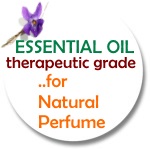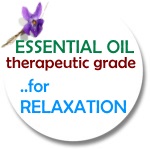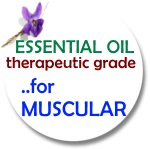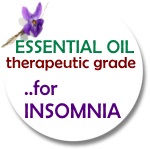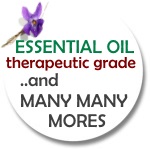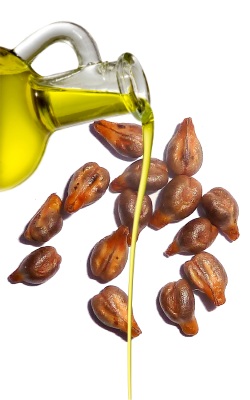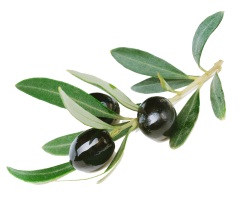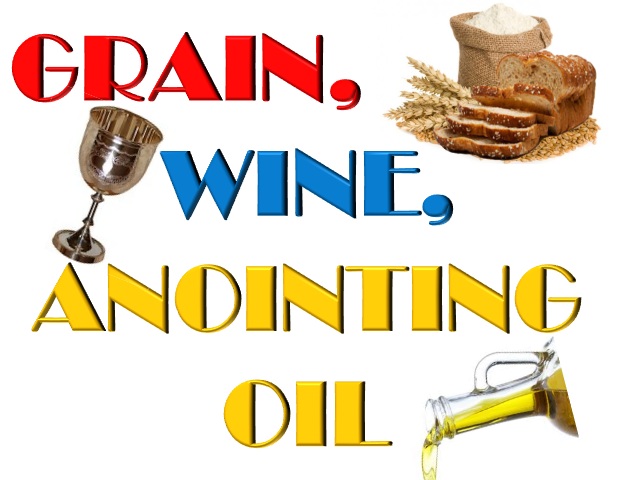100% PURE ESSENTIAL OIL
uniKK & uniCC aims to provide as much information about our Essential Oil as possible. You should also 'google' for more information especially for specific purposes that may not be available here.
|
Aniseed oil .was revered by ancient civilizations, especially by the Romans, Egyptians and Greeks. The Romans used it in a spicy cake know as 'mustaceus', the Egyptians used it in bread, while the Greeks used it for its calming influence on the digestive tract.
Aniseed is used in liqueurs and cordials, toothpastes and mouthwashes. In India it is used as a breath sweetener and in Turkey, a popular alcoholic drink called 'raki ' is made from the seeds. Bergamot Essential oil ..is subtle and strong, uniting the most enticing perfume with possible powerful healing effects. This light greenish-yellow oil has fresh sweet-tart orange-fruit scent, with a slightly spicy balsamic undertone. Bergamot essential oil is named after the Italian city of Bergamo in Lombardy, where the oil was first sold. This is a truely wonderful Bergamot, with more notes than any we've ever tried. Citronella Essential Oil is commonly known for it's insect repellent properties, though it has many other uses in aromatherapy. The oil is steam distilled from a tall, aromatic, perennial grass originally native to Sri Lanka. This yellow oil is the known as lenabatu or Ceylon citronella, and has a fresh, powerful, lemon-like scent. Clary Sage Essential Oil ..is warming, sedative, an excellent nerve tonic, and can induce feelings of mild euphoria in some individuals. It is thought enhance one's ability to dream. Clary Sage oil is a tonic for one's overall well-being, and is ideal for use on a regular basis in baths or as a perfume. Cypress essential oil ..is distilled from the leaves of a tall evergreen tree with slender branches and a statuesque conical shape. Growing to a height of 25-45 meters (82-147 feet), the Cypress bears small flowers and round brownish-grey cones or nuts. The essential oil is produced by steam distillation from the fresh dark green needles and twigs. Native to Southern Europe, Italian Cypress (Cupressus sempervirens) has spread to North Africa and North America and is cultivated in France, Spain, and Morocco. Eucalyptus Essential Oil ..is the most well known of the Eucalyptus oil varieties, being extracted from a beautiful, fragrant, tall evergreen tree native to Australia and Tasmania. Of the 500 types of Eucalyptus tree species which yield an Essential Oil Eucalyptus Globulus is the most common for medicinal purposes due to it's high cineol (or eucalyptol) content. The oil is a colorless liquid with a camphoraceous odor and a woody-sweet undertone. Frankincense Essential Oil ..known as "Liquid pearls from the tree of life. For joyous upliftment & soothing detachment from stress and strain, wear and tear. A fragrant light to shine in the night of the soul." – Malte Hozzel. This pale yellow slightly viscous liquid has a fresh top note with a deep, warm, rich balsamic undertone. The 'CO2' distillation means the resin was never boiled at high temperatures to extract the oil - it simply was immersed in liquid carbon dioxide which then simply evaporates when the process is complete. This extracts the most pure oil, closest to the original plant state as possible - we consider the therapeutic effects of the CO2 distilled oils to be equal to, if not better than, the steam distilled varieties. Geranium Essential oil ..vital, sensual presence is not subtle, but direct & unavoidable, making it one of the oils of choice for aphrodisiac qualities. (Geranium Essential Oil) inspires natural beauty & enjoyment, uplifts instantly & "tonifies" the mind & intellect in a powerful, nearly demanding attitude. Mobilizing hidden creative & emotional reserves, helping us to rise to our own earthly & spiritual identify. A fiery beauty for the spells of all worlds." Ginger Essential Oil ..is called a 'total' extract, as the CO2 method used yields a greater number of aromatic compounds from Ginger than other ways of distillation. This pale yellow liquid from the plant's root has a fresh woody-spicy aroma. The scent of Ginger oil is gently stimulating, bringing physical energy and courage. Grapefruit Essential Oil ..is cold-pressed from the rind of ripe grapefruit. It is a yellow liquid with a fresh, sweet citrus aroma, which is considered uplifting and refreshing. Like essential oil of Lemon, grapefruit is cooling, cleansing, and decongestive, and can be beneficial for an overheated liver and sluggish lymph system. |
Aroma ...
s the word for a fragrant scent, one that pleases the nose in a way that makes you lick your lips. |
|
Love ...
is patient, love is kind. It does not envy, it does not boast, it is not proud. It does not dishonor others, it is not self-seeking, it is not easily angered, t keeps no record of wrongs. Love does not delight in evil but rejoices with the truth. It always protects, always trusts, always hopes, always perseveres. Love never fails. |
Jasmine Essential Oil This Jasmine Absolute is a simply intoxicating oil produced from jasmine blossoms; 1000 pounds of blossoms (about 3.6 million fresh blossoms) produce one pound of Jasmine oil. The blossoms are collected before sunrise, and handled with care to preserve their delicate scent.
Juniper Berry Essential Oil ..is a clear liquid with a sweet, fresh, woody-balsamic aroma. The bright, wildgrown, forest-like scent of this Juniper blends well with many oils, and has been noted to evoke feelings of love, health, and peace. We especially like using it in a diffuser or humidifyer to fill the space with the aroma - evoking many who enter the space to remark, "It smells so good in here!" Juniper may elevate one's spiritual awareness, and on a phyical level, Juniper may work as a general detoxifier and cleanser, as well as being beneficial for the skin. Lavender Essential Oil ..produced from flowers growing wild in high elevations (though not as high as our 'High Elevation variety) of France, is an exceptional Lavender. It is a bit 'deeper' than the High Elevation oil, and sweeter overall. The oil has a fresh, floral, soft and sweet aroma - it is almost clear and quite fluid. Lemon Essential Oil ..has a refreshing scent that is thought to stimulate the liver and has a gentle, calming effect. Lemon oil is thought to promote clarity of mind and purpose, as well as generally increasing one's well-being and physical energy. Lemongrass essential oil ..has been used to support digestion, purification and regeneration of tissues. Research presented in 'Pytotherapy Research' discussed the powerful anti-fungal effects of Lemongrass oil when topically applied. Lemongrass oil may help improve circulation, digestion, and eyesight, while combating headaches, infections and fluid retention. Spiritually, the aroma of Lemongrass Oil is thought to promote psychic awareness and purification. Lime Essential Oil Originally from Asia, it is now cultivated in most warm countries, especially Italy, the West Indies and the Americas. It is an evergreen tree growing up to 4.5 meters (15 feet) high with smooth, green leaves, stiff sharp spines and small, white flowers. The fruit is green and although there are many varieties they usually measure about two inches in diameter. It was introduced into Europe by the Moors and from there it migrated to the Americas. Marjoram Oil ..(Spanish) is a distilled essential oil, meaning it contains the essence of the marjoram plant. Marjoram (Thymus mastichina) is a familiar herb used by herbalists since ancient Greece. It is commonly used in aromatherapy and blends well with lavender and bergamot oils for a relaxing combination. This marjoram oil is not sweet, but bitter and fragrant. Myrrh essential oil ..is produced from resin extracted from the Myrrh tree (or shrub) found in the Middle East. The trunk of the Myrrh tree yields a natural oleoresin when pierced, and the pale yellow liquid hardens into reddish-brown drops known as Myrrh (the tree remains healthy after harvest). The oil is a pale yellow/amber oily liquid with a warm, sweet-balsamic, slightly spicy-medicinal scent Neroli essential oil ..is a very precious oil produced from blossoms of the Bitter Orange tree. These blossoms are small, white and very fragrant. Our Neroli Oil is steam distilled, not solvent extracted. The high cost is a result of requiring 1 ton of orange blossoms to produce 1 quart of oil. Orange (Sweet) Essential Oil ..is the oil produced from the fruit of the Orange tree - Other 'orange' essential oils are from the bitter orange tree: Petitgrain Oil being produced from the leaves, Neroli Oil from the blossoms, and Bergamot being pressed from the peels. Sweet Orange essential oil is citrusy and brightly fragrant, lending itself to uplifting the emotions and the mind. Rather than stimulating, the overall effect is calming, and can act as an antidepressant. |
|
Patchouli Essential Oil ..people seem to love it or hate it. This well know essential oil has a somewhat deserved reputation as the scent of the Hippy generation (according to one source, it’s use began as a mask for the odor of a particularly cherished herb), though it’s traditional use dates back hundreds, perhaps thousands of years. Today, Patchouli has a well-deserved reputation in aromatherapy, with it’s deep, musky, and sweet odor, and Earth and Fire balancing energy. It is an exotic aroma that can forever leave an imprint on the olfactory memory.
Petitgrain oil ..is extracted from the leaves of the tree but was once extracted from the green unripe oranges, when they were still the size of cherries, hence the name Petitgrain or 'little grains.' It is widely used in pharmaceutical products and perfumery and is the classic ingredient of eau-de-cologne. Petitgrain oil is in general non-toxic, non-irritant, non-sensitizing and non-phototoxic. Pepper (Black) Essential Oil ..can be used in your aromatherapy formulas and in perfumery. This gently extracted oil may be superior in aroma to the steamed distilled essential oil that is more commonly available, and it may give better therapeutic results. It is a beautiful orange colored liquid with a soft yet spicy aroma which really amazed us when the first bottle was opened. Peppermint oil ..is considered by aromatherapists as one of the more indispensable essential oils. The oil should be a part of every traveler's first aid kit - it can work wonders for motion sickness and general nausea for some people. Medical research has found Peppermint oil to be effective for an irritable colon. Further, French literature suggests Peppermint for asthemia due to its liver strengthening and regenerating properties. Pine Essential Oil ..was investigated by Hippocrates, considered the father of Western medicine, for it's beneficial effects on the resperatory system. The oil has been noted for it's anti-septic properties - Native Americans stuffed bedding with pine needles to repel lice and fleas. Rose (Blend) Essential Oil Love & devotion. Many throughout the ages have loved Rose; it is one of the more popular oils in aromatherapy and is generally associated with love and femininity. The aroma is as delicate as the petals, which need to be hand picked in the early hours only to yield a small amount of oil. Place of Origin: Bulgaria. Part of Plant Used: Flower. Method of Extraction: Steam Distillation. Method of Application: Massage, Bath. Note: Base. Aroma: Rich, deep, sweet-floral slightly spicy. Rosemary essential oil ..is steam distilled from Rosemary herb, which derives its name from the Latin 'ros marinus', or 'dew of the sea'. Our wild grown Rosemary has a wonderful depth of aroma, not sharp or medicinal, but bright, uplifting and almost sweet. This oil is of the chemotype 1,8 Cineole. It has a lower keytone content than the Verbenonone chemotype, and thus it is considered a safer essential oil for extensive use. Rosewood Essential Oil Serenity & openness. If like the Greek god Atlas, you feel you carry the weight of the world on your shoulders then meditate with the soft woody aroma of Rosewood to lift your burdens. Place of Origin: Brazil. Part of Plant Used: Wood. Method of Extraction: Steam Distillation. Method of Application: Massage, Vapourisation, Bath, Compress. Note: Middle to Base. Aroma: Sweet, woody-floral aroma, hint of spice. Sandalwood essential oil ..is extracted from the Sandalwood tree, native to the East Indies. The best quality is reputed to be from Mysore, India - ours is of this variety, wildgrown and organic. Mysore is also the name given to self-directed yoga practice of the Ashtanga lineage - for the yogi, Sandalwood is believed to encourage meditative states and to enhance devotion to one's god. The divinely sweet aroma, a softly balsamic base-note, evokes the Earth element at its most sensual yet deeply tranquil. This is a very smooth sandalwood, best used for it's therapeutic, rather than strictly aromatic properties; if you are looking for a classic sandalwood aroma for your perfume blends, we recommend the Vanuatu (a crisp 'driftwood' aroma) or the Australian (an earthy and warm scent, also good for therapeutic use). Sweet Basil Essential Oil ..has been referred to as 'the royal oil to strengthen the mind and heart and to reinforce resistance against infectious diseases.' The basilicum variety is also known as 'common', 'true', and 'French' Basil (though the plant is native to tropical Asia and Africa). The essential oil is steam distilled from the whole flowering herb. It has a fresh sweet and slightly spicy aroma, with light balsamic undertone. |
Peace ...
is not the absence of conflict, but the presence of God, no matter what the conflict. Freedom from desire leads to inner peace. |
|
What Is Liberty?
A condition in which a man’s will regarding his own person and property is unopposed by any other will. ...where the Spirit of the Lord is, there is freedom. |
Spearmint Essential Oil ..is first and foremost considered the more gentle version of Peppermint oil, suitable for use with children and others who may find peppermint too strong. Spearmint is valued around the world as a culinary herb, and for it's gentle medicinal properties.
Tea Tree Oil ..is steam distilled from an extremely hardy tree native to Australia - when cut down, the Tea Tree will quickly regrow from the stump. The Aborigines in northeastern New South Wales have used tee tree as a healing herb for many generations. They make a poultice of the leaves and treat skin infections, cuts and wounds. Thyme Essential Oil ..is extracted, by steam distillation, from the fresh or dried leaves and flowering tops of the plant. This is the Linalool chemotype, the most gentle variety of Thyme oils. The oil is mainly located in small glands on the leaves and contains thymol, paracymene & linalol. Wintergreen Essential Oil ..is extracted from the leaves of a small evergreen herb native to North America. The plant has been used for respiratory conditions such as chronic mucous discharge, but is mainly employed for joint and muscular problems such as lumbago, sciatica, neuralgia, myalgia, etc. The dried leaf and stem are current in the British Herbal Pharmacopoeia as a specific for rheumatoid arthritis. Ylang Ylang Essential Oil ..is distilled from a small tree which grows in Indonesia, the Philippines, Madagascar and Reunion Islands. It means 'flowers of flowers' and you can find pink, mauve and yellow flowered varieties. The best oil comes from the yellow flowers, which are picked very early in the day, in early summer. The fragrant, pale yellow petals are often strewn across the marriage bed as a symbol of love. The oil is produced by steam distillation. The flowers may be distilled several times, and the oil varies in quality, depending on the distillation. This oil is from the first distillation, hence the 'Number 1' term in the name. Ylang Ylang Extra Essential Oil There are three main grades of Ylang Ylang, graded depending on the length of the distillation process. The first is called extra, then three more distillations called grades 1, 2, 3 and complete. Ylang Ylang Extra is the first part of the distillation. Ylang Ylang Extra has an extremely deep, sweet, floral- balsamic aroma. |
NOTE : The information provided in this website is for educational purposes only. The data is not considered complete and is not guaranteed to be accurate.
|
DISCLAIMER The information in this web site is provided for purpose of sharing; "as is" and "as available" basis, and without any representations, warranties or conditions of any kind, whether express or implied, and including without limitation implied warranties of merchantability, fitness for a particular purpose, performance or durability.
|
